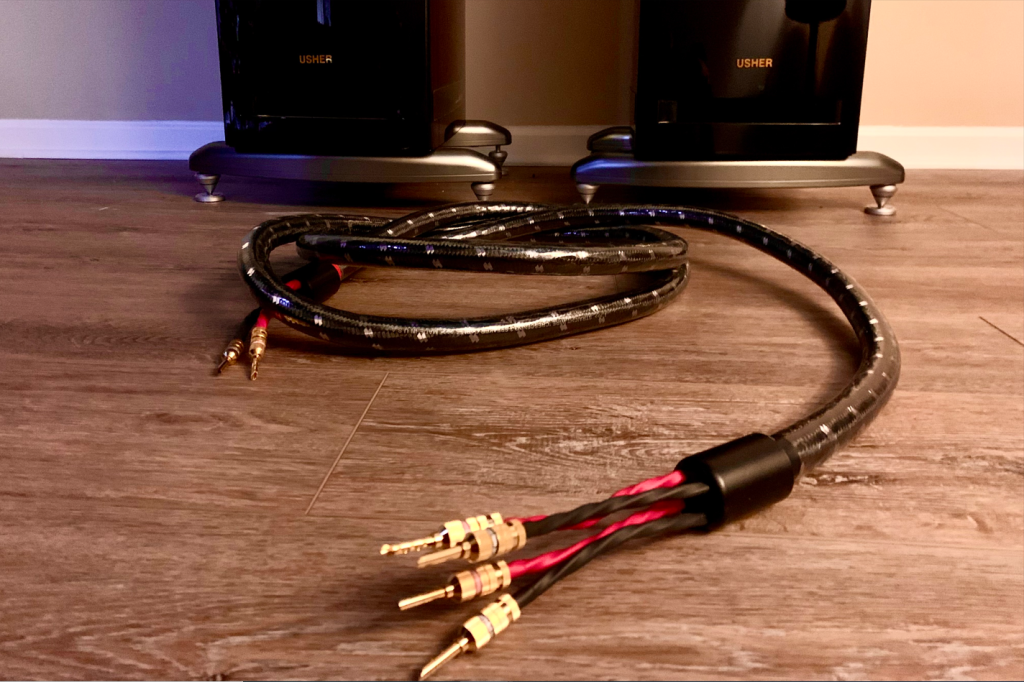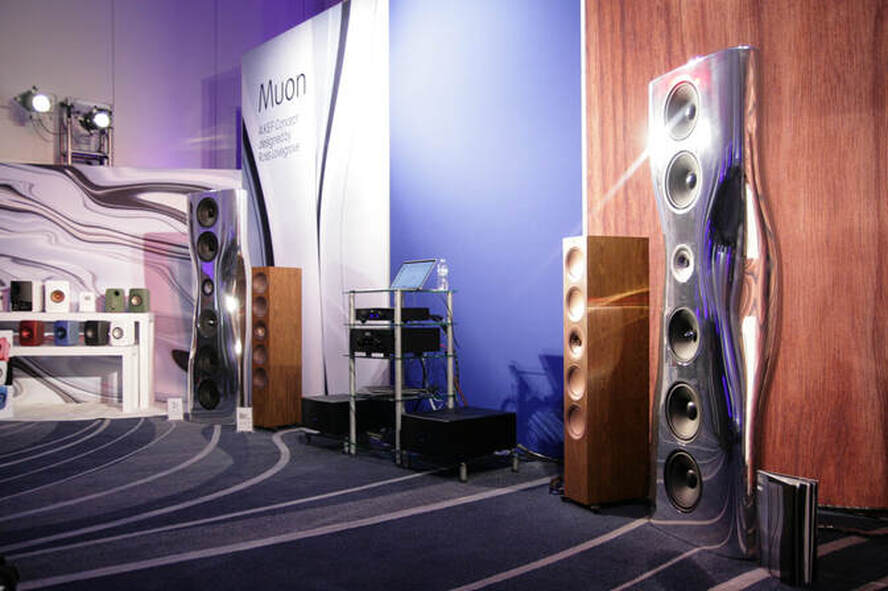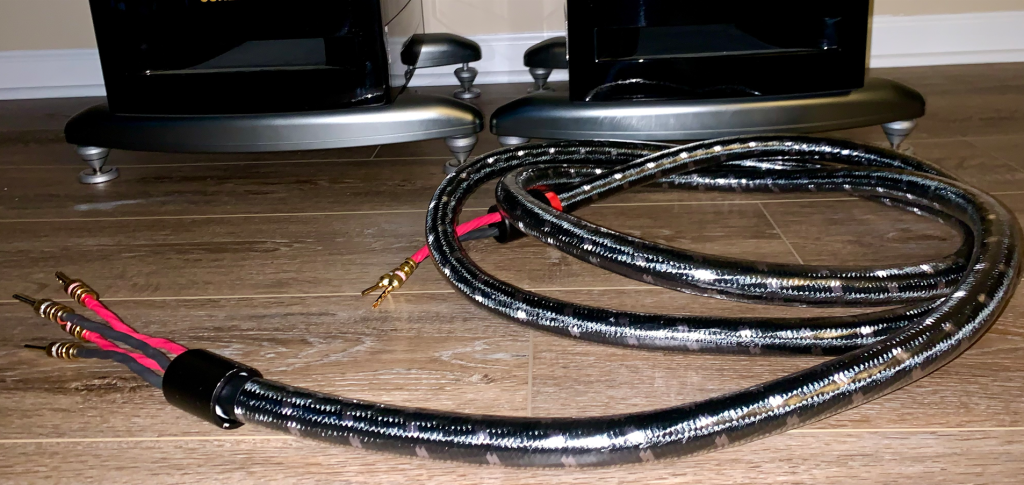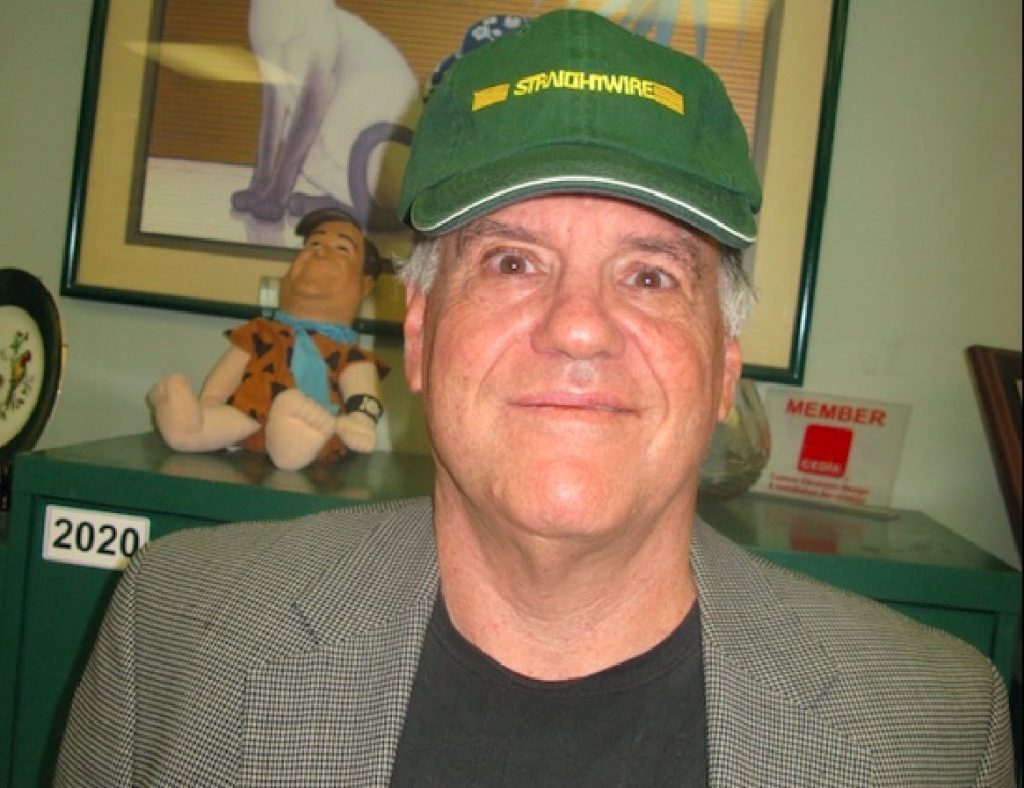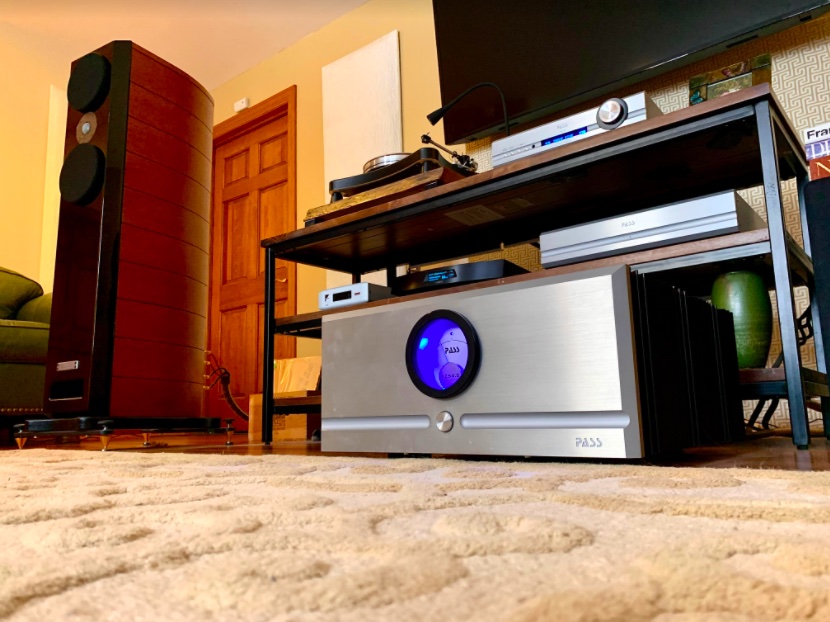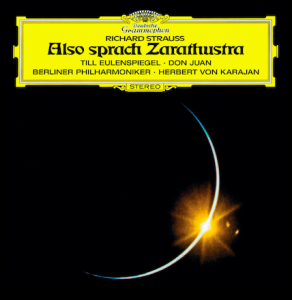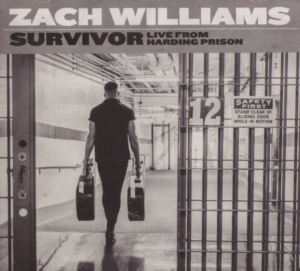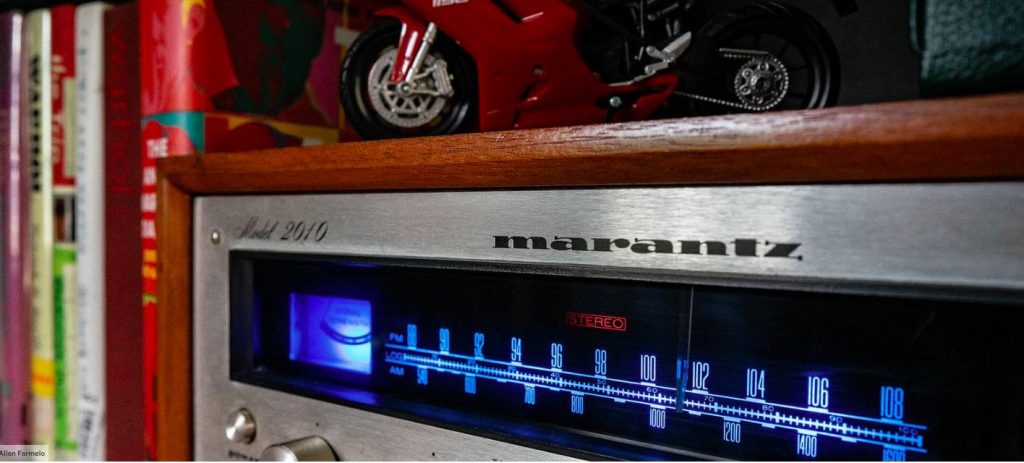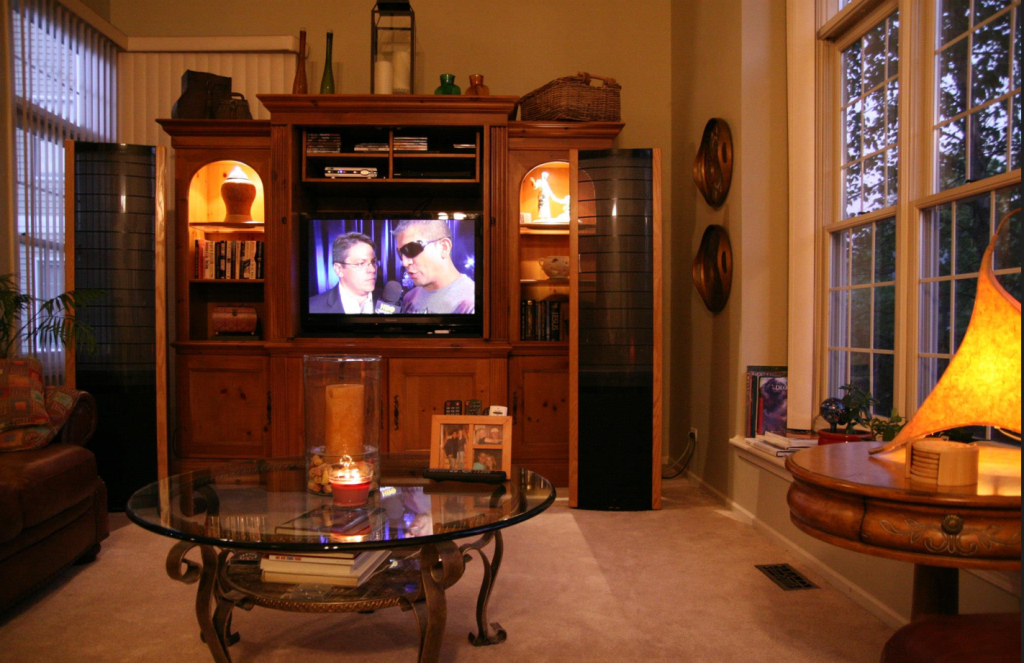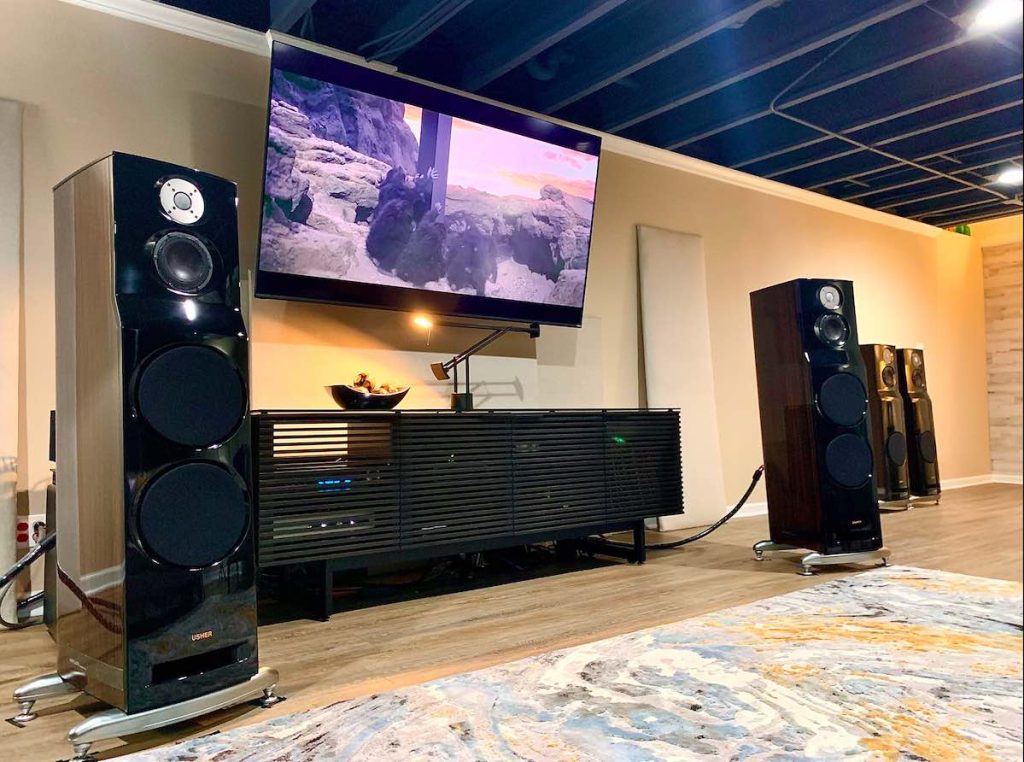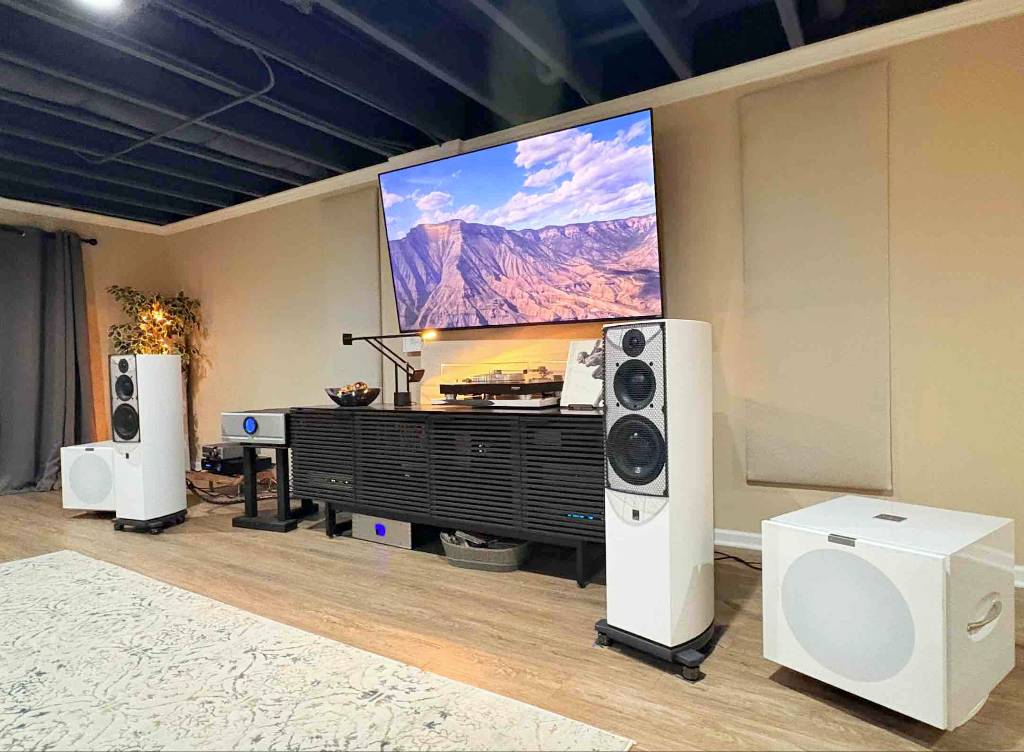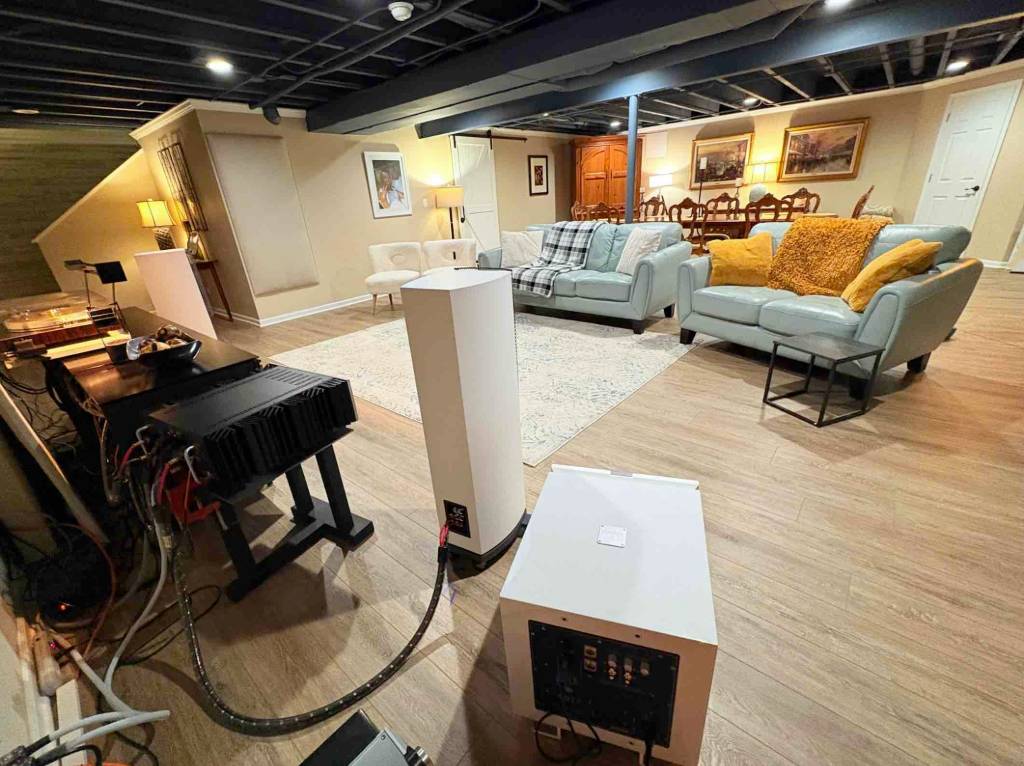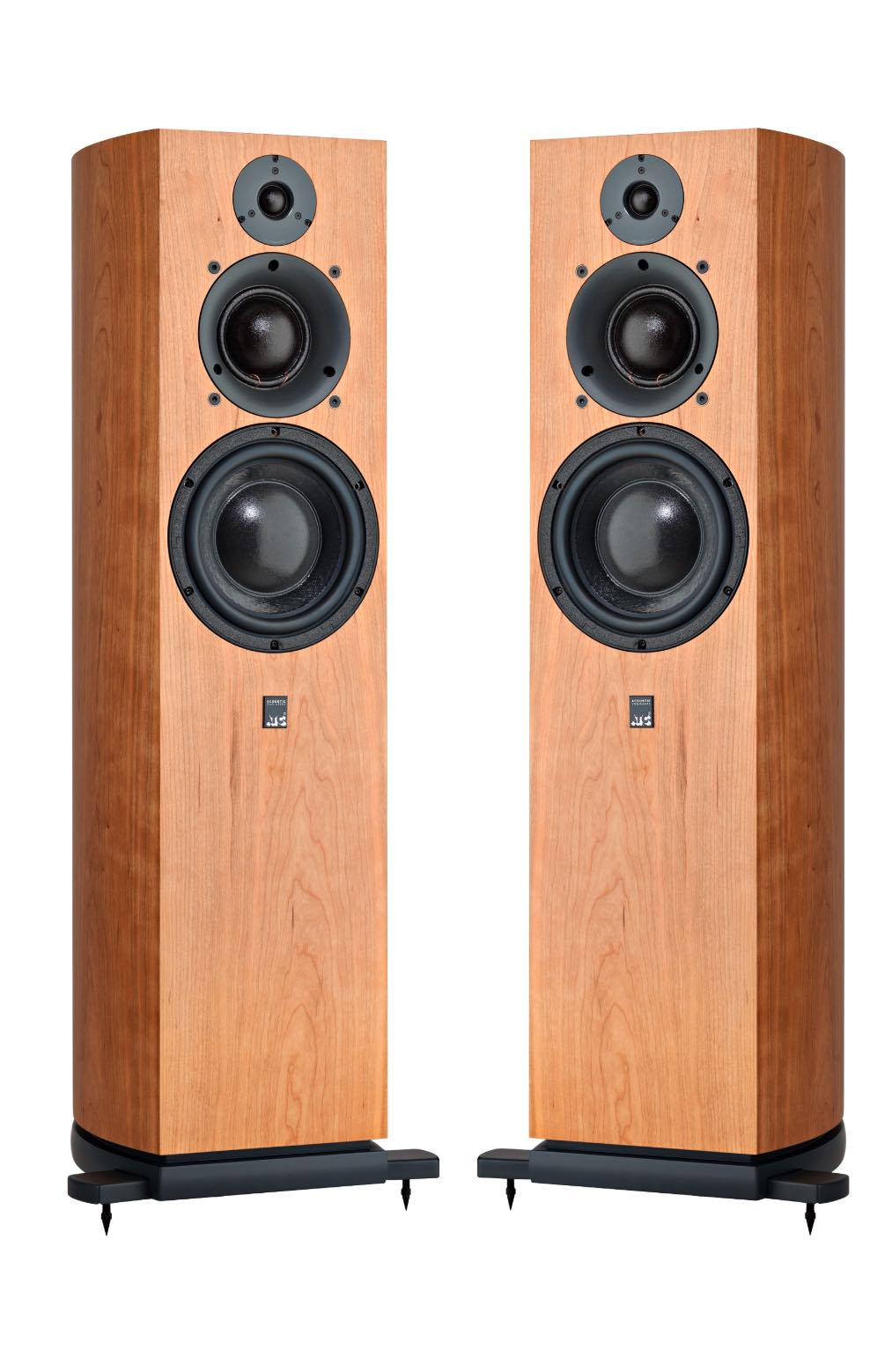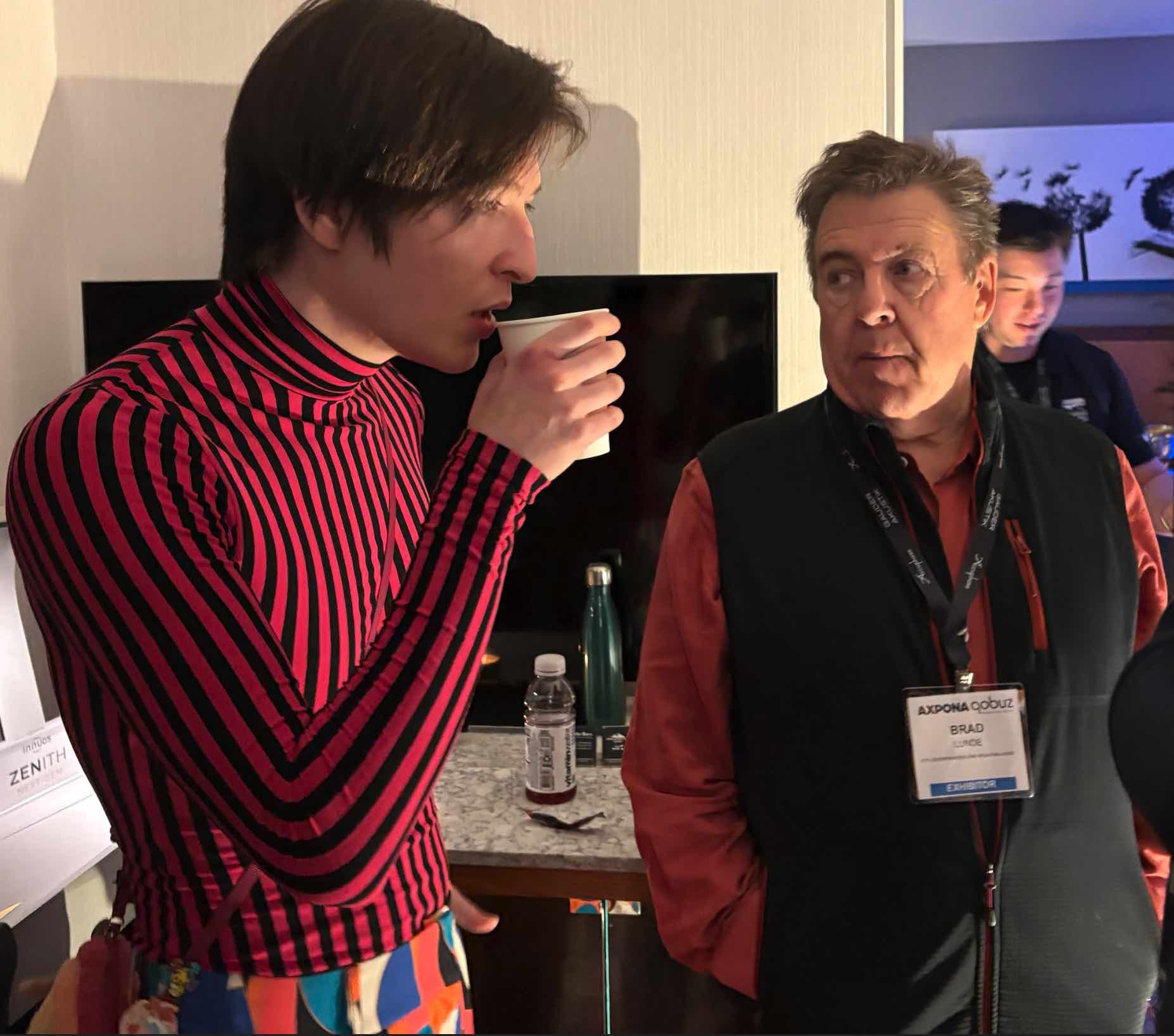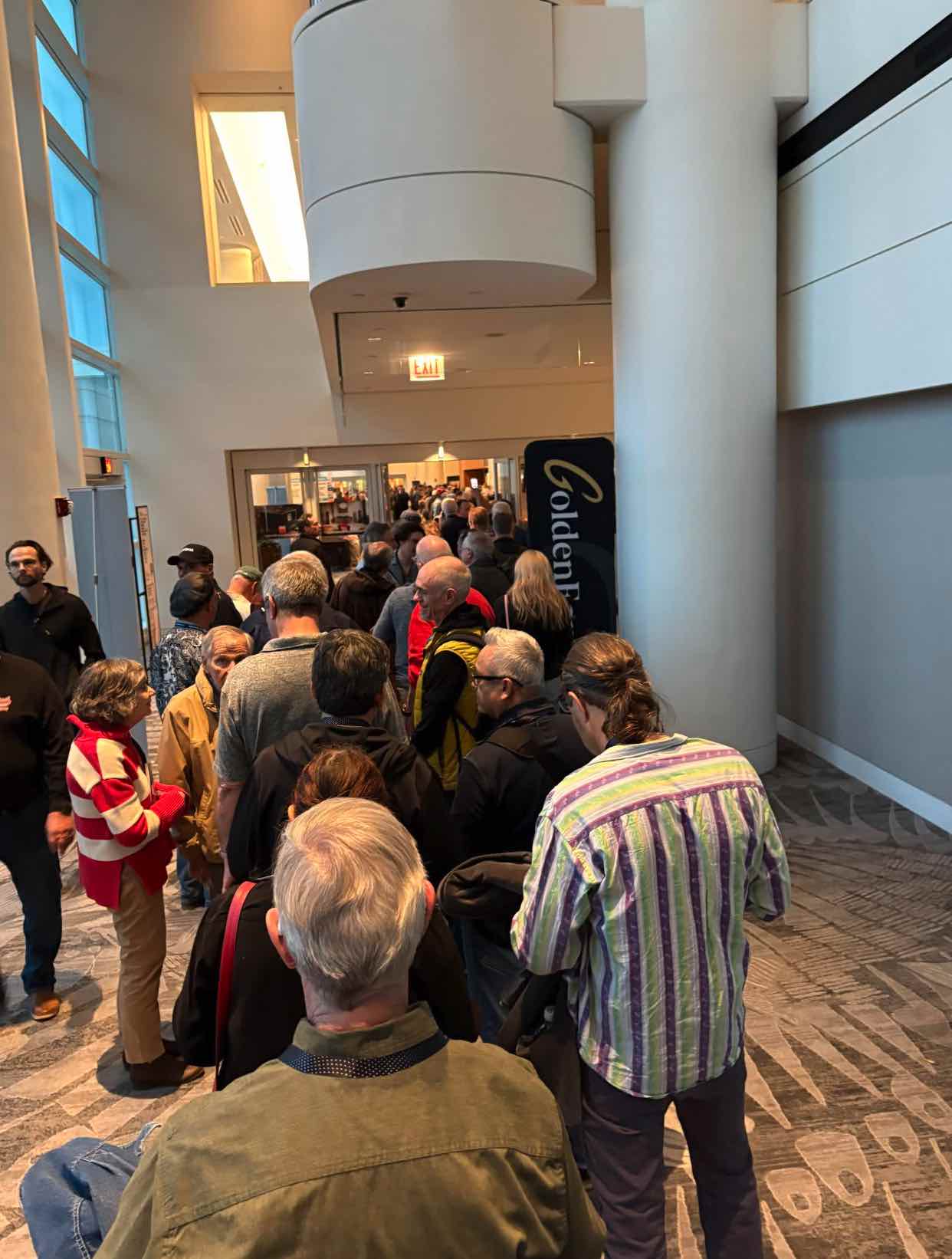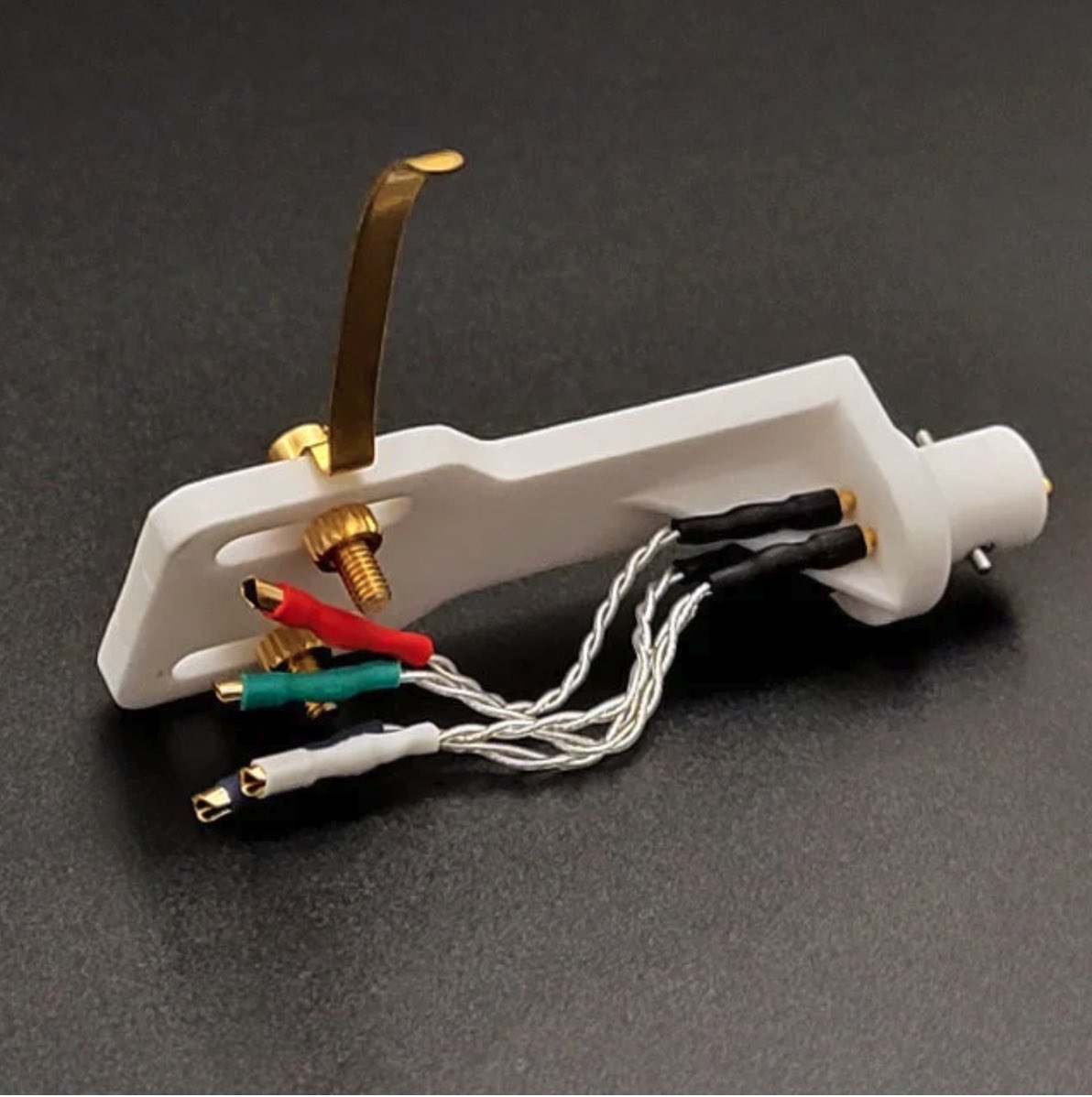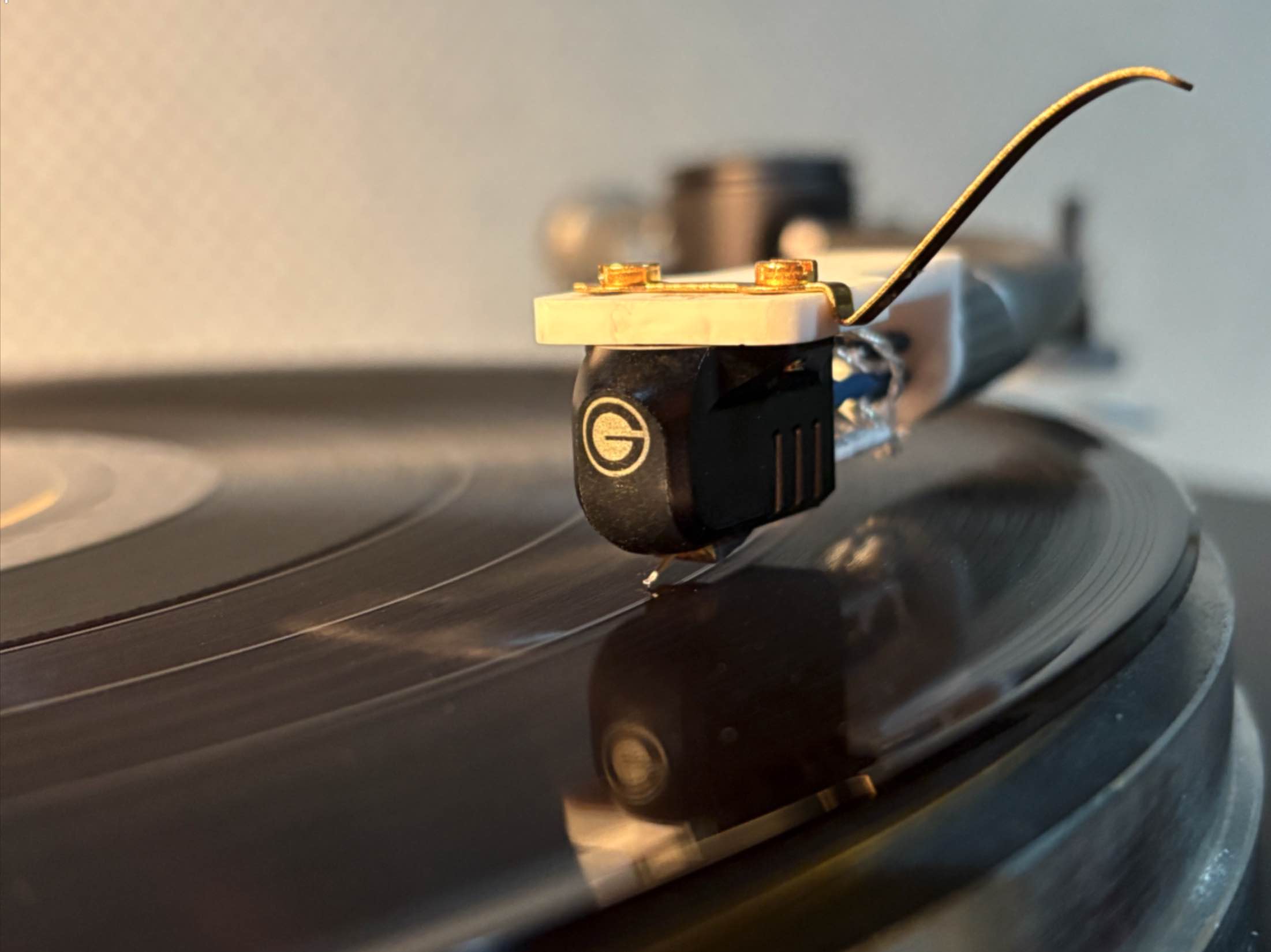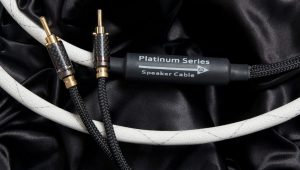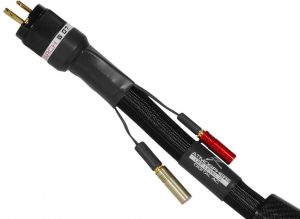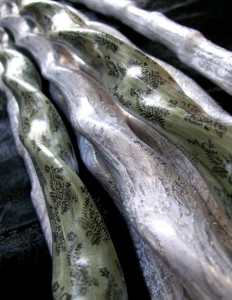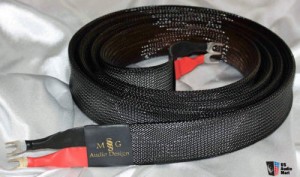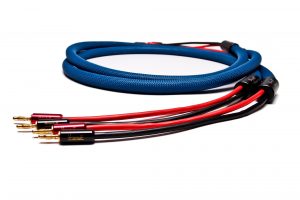In Stanley Kubrick's 2001: a Space Odyssey, awestruck australopithecines (prehistoric ape-like primates with human traits) encounter an alien, 11' x 5' x 1.25' black monolith standing in the rocks and crags of an African desert and, shortly thereafter, have an epiphany and create crude weapons. Fast forward 4000 years: clothed and scented homo sapiens gawk at biomorphic, stainless steel towers in a carpeted room at Audio Expo North America 2019 (AXPONA) in Schaumburg, IL. But instead of being imbued with inventive skills, they are enchanted with their sleek aesthetics and superb sonics.
I am one of them. These shiny $225,000 KEF Muon loudspeakers flood the space with luscious layers of jazz, however, I am especially drawn to the beefy black Straight Wire Crescendo 3 speaker cables channeling the music, unfettered, from an amplifier nearby.
That day at AXPONA 2019 was my first glimpse of them. The next time I spotted the Crescendo 3s was on a tour of Straight Wire, Inc.'s headquarters in Hollywood, Florida in August 2020.
Image courtesy of @kylehebert on Twitter
Not Some "Star Child" Fairy Dust Cable
"Many of our customers are engineers," said Steven Hill, 65, president of Straight Wire, Inc. and a former CPA and graduate of University of Pennsylvania's Wharton School of Business (he also took courses at U.P. in Electrical Engineering "just for fun.") As a 39 year veteran of the industry, he considers himself "The Godfather" of audio. In addition to making its own lines of premium cables, Straight Wire does a lot of Original Equipment Manufacturing (OEM) for companies like Harman International, JBL and Mark Levinson, Triad, Wisdom, and others, as well as headphone cables and external wires for other companies. (And, on a more personal note, I use his cabling throughout my system to great effect.)
At just over an inch thick (or roughly the size of the Star Child's wrists at the conclusion of 2001: a Space Odyssey), their flagship speaker cable, the Crescendo 3, features 12 conductors of 15 AWG (American Wire Gauge), Oxygen Free High Thermal Conductivity (OFHC) CDA 101 copper that are compacted, at six percent compression, to combine the best attributes of solid-core and stranded conductor technology. These conductors surround a core of seven tubes made of TPE (Thermoplastic Elastomers, with properties similar to rubber, but far more resistant to heat and chemical exposure) that maintain a uniform mechanical foundation if they are flexed or bent. The cabling is covered by dual thickness insulation (i.e., "soft" Foam un-sintered PTFE and "hard" Foam Polypropylene), followed by black anti-static fiber with a silver dual diamond pattern, and a clear jacket top.
The Crescendo 3 can "effortlessly bridge premium amplifiers (regardless of power or format)...[delivering] lifelike preservation of low level details coupled with unmatched dynamics...which are still easy to discern," their literature claims. "Upper registers are more distinctly apparent without impacting the mid and lower register presentation qualities. It synergizes reference caliber components to provide captivating performances." (Read more HERE.)
Steven Hill, president of Straight Wire, Inc.
During my tour, Steven Hill, asserted that Straight Wire was the first high end AV cable company to use compressed conductors for AV cable applications over 20 years ago. Utilized in the automotive and other industries for strengthening properties, few had explored the electrical and mechanical benefits for audio signals.
"A perfect lay of seven, 19, or 41 strands running thru consecutive dies results in minimized air spaces and electrons strand to strand jumping," he explained, adding that the resulting "compressed conductor technology (CCT) delivers the best attributes of solid versus stranded conductor configurations."
Hill offered some insight into the care that must be taken in the handling of internal wires during cable construction.
"As copper is heated from room temperature, it releases heat and moisture," he said. "One solution is preheating the room temp wire to 150 plus degrees F and add a skim coating of insulation before the final, thicker insulation."
In addition, Straight Wire cold wraps the bare wire of some of their premium cables with PTFE tapes. Many of these tapes are soft and can deform when rolled in the manufacturing process, as well as bent in real life usage. By adding a thin layer foam polypropylene / polyethylene, it gives structural stability to minimize mechanical and electrical variations. (You can read more in my piece, here: "Cooking Cables with PTFE - a Tour of Straight Wire, Inc. and an AV Cable Factory")
Not Merely a Passing Fancy
Back home several months later, I received the Pass Labs X250.8 stereo amplifier, XP-12 preamplifier, and XP-17 phono preamplifier for review, and Straight Wire's Director of Sales, Jerry Willsie, shipped me their Crescendo 3 speaker cables (in internal bi-wire mode—read more on bi-wiring HERE) and interconnects to use with the Pass Lab gear.
The weight and initial stiffness of the Crescendos make it wise to uncoil and straighten it out first, then bend the cable gradually from the center outwards towards the ends so as not to put undue pressure on the connectors when hooking them up.
Once set up, I was immediately impressed with the improvement in balance and detail throughout the sound spectrum, giving full expression to the X250.8 amplifier, which was simply an incredible performer on its own (you can read that review HERE). Unfortunately, the amp was so large, it sat parked out front of the system on its rubber feet, offending Belle's aesthetic sensibilities (she prefers less clutter). Thus, following the review, it was returned to be replaced by the Pass Labs X150.8, which still packed plenty of power and ample detail, but takes up less space. However, the Straight Wire Crescendo 3 speaker cables remain in my system to this day.
The Straight Wire Expressivo Grande II speaker cables, at left, and the Straight Wire Crescendo 3 speaker cables at right
Setting Up for Comparisons
In preparation for this review, Willsie shipped out a pair of brand new Straight Wire Expressivo Grande II speaker cables (also in internal bi-wire configuration) for comparison. As per their literature, the Expressivo Grande II utilizes an "Advanced Helix" design with six 15-gauge OFHC Copper conductors for the positive signal and dual, opposing spiral shields for the negative path, around a non-conductive, low resonant core. This ultra-low resistance speaker cable employs an exotic "air suspension" design which uses a monofilament wrap between the conductor and insulation to approach the theoretical ideal of a true air-space dielectric. The cable is custom jacketed with durable mesh, rather than the Straight Wire traditional clear jacket, along with their anti-static micro-fiber braid. The Expressivo Grande II has a slightly warmer sound signature, which should make for interesting comparisons. As such, it retails at $1,820 for an eight foot pair. (You can view a listing of all the associated equipment by clicking on my byline at the beginning of this article.)
I take several weeks to burn in the Expressivo Grande II speaker cables. Now, for those who think "burn-in" is nonsense, Steven Hill offers the following:
"Just like for a speaker or preamp, the first time signal is running through, the inner insulation—or dielectric material on the conductors—stores and releases energy in small amounts," he explains. "It becomes stable anywhere from 20 to 50 hours based on materials and signal size and, as such, it is a one time process.
"The analogy that's easy to visualize is taking a heat gun or hair dryer to Saran or clear wrap," Hill offers. "It will shrink to a certain point and stabilize—then it won't shrink any more."
Witnessing the Event
First—and fittingly—I begin the listening test with a superb recording from the 2001: a Space Odyssey soundtrack. An ominous, low frequency rumbling hum of organ, contrabassoon, and double basses builds, rising from the bowels of the substrata at a low C over the span of 18 seconds. Somber trumpets play three long notes in the key of C major—and then the orchestra explodes in a celebratory response, punctuated by a resounding rolling, then pounding timpani drum. This repeats two more times, and then the orchestra bursts forth in a rousing, triumphant flourish in the iconic "Introduction" (Berlin Philharmonic Orchestra/Herbert von Karajan. Strauss: Also sprach Zarathustra (Thus Spoke Zoroaster). Qobuz FLAC 96kHz, 24-Bit, Deutsche Gramophone (DG), 1995).
Forever linked to 2001: a Space Odyssey, its fanfare musical form can be traced back to the 14th century, where it was used to signal the start of a hunt (David Cheal. "Life of a Song: Also Sprach Zarathstra—a Fanfare that has Echoed Down the Years." ig.fi.com, Sept. 28, 2020). There's a timeless transcendence to this cultural iconic piece, and this sublime recording, richly layered and vivid, delivers it with superb authority and presence.
The Crescendo 3 unpack an incrementally heightened perception of tiny details—the articulation of textures of the timpanist's mallet strikes to the membrane on his large, semispherical drums, for example, or the brassy sheen of trumpets, the sense of the cavernous concert hall, minute details in the woodwinds and separation of instruments that rise up in triumphant succession.
With the Expressivo, it's warm, engaging, and honestly, I have virtually the same euphoric experience, but sans the extra perception of the minutiae.
Second, Ludwig Alfonso's drums, Linda Briceno's flugelhorn, and Martin Bejerano's piano are a luxuriant, black velvet backdrop, and Roxana Amed's contralto vocals—smoky and emotive—are a regal diamond that bedazzles in the lovely and languid ballad, "Nostalgia Andina" (Roxana Amed. Unanime. Qobuz FLAC 48kHz, 24-Bit. Sony Music Latin, 2022). Hailing from Buenos Aires, Argentina by way of Miami, Florida, Amed's voice is soft, supple, and expressive as she articulates this Latin torch song; accompanied by brushed snare, double bass and plaintive piano, it is intimate and evocative, her vocals a flying ember, rising gently from a dwindling fire, and swirling slowly against a black country sky.
With the Crescendo 3, the warmth and breathiness of Amed's vocals, the detail and clarity of the leading edges and decay of piano, cymbal, and bass are at once spot lit and natural; the texture and thump of of drum skins, and the warm tone and texture of the piano are intimate. The fat, mellow and sometimes spritely tones of Briceno's flugelhorn, Alfonso's hi-hat and cymbals are clearly defined as they intermingle with piano and, later, Amed's voice.
With the Expressivo Grande's, her vocals are still breathy and brilliant, but a smidgen softer in the highs; the flugelhorn, the piano, drum kit and bass remain captivating and engaging in this lovely dance, but are a touch warmer; it's almost as if someone switched in a pristine vinyl LP of this session for the digital one that played moments before. You have a great sense of the space and macro detail, but micro details are not as clearly defined.
Third, I stream an inspiring cut from Zach Williams' Live from Harding Prison EP that Belle introduced to me when she shared its video version on YouTube (you can see that HERE). The warmth of Zach Williams' acoustic guitar contrasts with the gritty harmonics of his country rock tenor as he sings:
If you've been walking the same old road for miles and miles
If you've been hearing the same old voice tell the same old lies
If you're trying to fill the same old holes inside
There's a better life…
Performing to 250 inmates at a sports facility at Nashville, Tennessee's Harding Prison, the acoustic imperfections and reverberations, as well as the crowd's singing, are readily apparent in Zach Williams' "Chain Breaker" (Zach Williams. Survivor: Live from Harding Prison. EP. Qobuz 44.1kHz, 16-Bit. Essential Records/Provident Label Group, September 14, 2018).
Then, the snap and punch of Logan Phillips' drum kit, the pious strains of Don Eanes' Nord Electro 5 keyboard's emulated organ and piano, and Brandon Robold's bassline energize and call us to church as the chorus envelopes the room:
If you've got pain
He's a pain taker
If you feel lost
He's a way maker
With the Crescendo 3, the effervescent edged rasp of Williams' vocals are clearer, while the soundstage seems subtly more open and vivid. Individual instruments are more clearly defined. Take the shimmery splash of Phillip's crash cymbal, for example, or Zack Ingle playing arpeggio on resonator guitar, which I scarcely noticed before. There's a little more delineation and space between instruments—as well as micro details in their interaction with the sports hall's acoustics.
Image courtesy of gearpatrol.com
With the Expressivo Grande IIs, the information is all there, but it's a little warmer, a little more rounded off in the highs by comparison. It takes me back to listening to high quality cassette tape recordings on a dorm mate's Marantz 2010 receiver at Iowa State University in 1980. It's a warm, engaging, and gratifying experience—perhaps a little more analog sounding, if you will.
With the Crescendo 3, there's heightened detail with slightly less encumbrances, with more bloom through the mids and highs while sounding a little more relaxed, natural and compelling.
Comparing the Crescendo 3 to the Expressivo Grande II speaker cables in my room reminds me of hearing the digital version of Supertramp's Paris Live at the Pavillon de Paris/1979 on Qobuz after listening to it on vinyl for my review of the Pass Labs XP-17 phono preamplifier (you can read that HERE). While I thoroughly enjoyed the LP, little bits of extra detail surprised and enchanted me in a way that I didn't expect, prompting me to explore readjusting the azimuth of my turntable to see if I can achieve a more optimal alignment for my tastes!
Premium Performance for a Price
I had left the Expressive Grande IIs connected to the system the previous two evenings and, switching in the Crescendo 3s before our evening watch on Wednesday, we sat down to watch the Jack Ryan Season 3 action series on Amazon Prime.
"Do you notice the extra detail in the sound?" I asked Belle.
"Yes," she said. "Definitely!"
However, when I mentioned their retail price, she protested. Belle felt we could get very good sound for a lot less money—which is true. We've done well with significantly less costly cabling, including the Straight Wire Pro Special speaker cables (an excellent symmetrical coax design) that cost me $350 some years ago, and they were marvelous! But here's the rub: with my current reference level system and customized audio environment, the premium performance that the Crescendo 3s provides comes with a price tag.
When we dated, Belle lived in a million dollar home with Bose Acoustimass speakers in her A/V; since I spent most evenings there, my stereo moved in after we got serious.
As Straight Wire's top shelf speaker cable, the Crescendo 3 retails for $3220 for an eight foot pair, which is not inexpensive. However, compared to some of the high end offerings provided by other notable brands, relatively speaking, it's really quite reasonable. A glance at the April 6, 2017 issue of the Robb Report—which came out long before today's supply chain related price inflation—underscores this point. Some examples include:
- AudioQuest Tree Series WEL speaker cables—started at $12,200 a pair
- Nordost Odin 2 Supreme Reference cables—$30,000 for a one meter pair
- Cardas Cable The Clear Beyond—$13,490/pair
- Skogrand's SC Beethoven cables—$22,000 for 2 meters
- VooDoo Cable Stradivarius Amati loudspeaker cables—$4400 for a 3.65 meter bi-wire pair
- Shunyata Research ZiTron Anaconda SP speaker cables—$4000/pair
(Alexander Lamascus. "Nine of the Most Wildly Expensive Speaker Cables." Robb Report, April 6, 2017)
Concluding Remarks
If you are looking for superb balance, detail, dynamics, performance, and value to bring out the best in your high end audio components, in a good acoustic space, I can heartily recommend the Straight Wire Crescendo 3 speaker cables.
Now here's a caveat: in a more lively, less treated room with lots of glass or hard surfaces, the extra warmth afforded by the Expressivo Grande IIs might strike a better detail and tonal balance, but with my acoustic panels, bass traps, curtains and rug, the Crescendo 3s are a better fit. Your experiences may vary, depending on your room, your equipment and tastes. Straight Wire offers a free audio system and room analysis service to help guide you in the selection of cables HERE).
The listening, viewing and living room at our first home together, circa 2014
"You've been in three homes since I met you," Hill reminds me, adding that my current listening space is really optimized compared to the other two, hence the Crescendo 3 speaker cables make perfect sense.
Our A/V family room with the Straight Wire Crescendo 3 speaker cables in 2022
Summed up, given excellent equipment, good acoustics, and neutral to warmer sounding speakers positioned properly, I would bet a massive monolith that the Crescendo 3s would inspire wonder and awe from the most ardent australopithecines and homo sapiens audiophiles alike. They are outstanding.
Crescendo 3 Speaker Cables
Retail:$3220 per eight foot pair
StraightWire, Inc.




